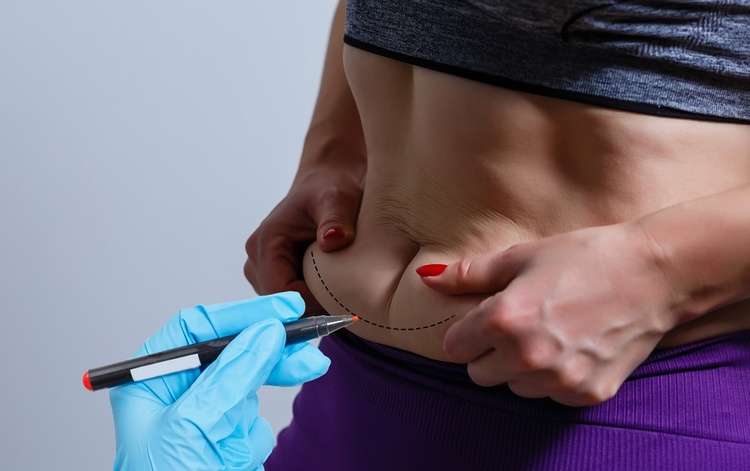Belly Fat Removal Methods: Overview of Techniques, Expectations, and Key Considerations
Belly fat removal methods are often discussed in relation to modern cosmetic technologies and approaches aimed at addressing stubborn fat in specific areas. This guide provides general information about commonly referenced procedures, what people often expect from them, and the considerations adults review when exploring these topics.

Excess abdominal fat affects millions of people across the United States and can be resistant to diet and exercise alone. While lifestyle modifications remain the foundation of fat reduction, medical and cosmetic procedures have emerged as supplementary options for those seeking additional help. The field of body contouring has evolved significantly, offering various approaches tailored to different needs and circumstances.
What Belly Fat Removal Typically Refers To
Belly fat removal encompasses a range of procedures designed to reduce localized fat deposits in the abdominal area. These methods generally fall into two main categories: surgical and non-surgical interventions. Surgical options involve physically removing fat cells through procedures that require incisions and recovery time. Non-surgical approaches use external technologies to target and reduce fat cells without invasive techniques. The term can also refer to body contouring procedures that reshape the abdominal area after significant weight loss. Medical professionals typically evaluate candidates based on overall health, body mass index, skin elasticity, and specific goals. It is important to understand that these procedures are not weight loss solutions but rather methods to address stubborn fat deposits that persist despite healthy lifestyle efforts.
Technologies and Techniques Often Mentioned
Several technologies have gained recognition in the field of fat reduction. Liposuction remains one of the most established surgical methods, using suction to remove fat cells through small incisions. Variations include tumescent liposuction, ultrasound-assisted liposuction, and laser-assisted techniques. Cryolipolysis, commonly known by brand names, uses controlled cooling to freeze and eliminate fat cells over time. This non-invasive approach typically requires multiple sessions. Radiofrequency and ultrasound-based devices deliver energy beneath the skin to heat and destroy fat cells while tightening surrounding tissue. Laser lipolysis uses laser energy to liquefy fat cells, which are then naturally processed by the body. Injectable treatments, such as deoxycholic acid formulations, chemically break down fat cells in targeted areas. Abdominoplasty, or tummy tuck surgery, combines fat removal with excess skin removal and muscle tightening for comprehensive reshaping. Each technology carries distinct mechanisms, recovery requirements, and suitability factors that medical professionals assess on an individual basis.
General Expectations and Limitations
Realistic expectations are essential when considering belly fat removal procedures. Non-surgical methods typically produce gradual results over several weeks to months as the body naturally eliminates destroyed fat cells. Most non-invasive treatments require multiple sessions spaced weeks apart to achieve noticeable outcomes. Surgical procedures generally provide more immediate and dramatic results but involve longer recovery periods ranging from days to several weeks. Fat reduction does not prevent future weight gain, and maintaining results requires ongoing healthy lifestyle habits. Skin laxity can affect outcomes, as procedures that remove fat may not adequately address loose or sagging skin. Individual factors such as age, genetics, metabolism, and hormonal influences impact both results and longevity. Side effects vary by method but may include temporary swelling, bruising, numbness, discomfort, or changes in skin sensation. Not everyone qualifies as an ideal candidate, and medical professionals typically screen for conditions that might increase risks or compromise results. It is crucial to understand that these procedures complement rather than replace healthy eating and regular physical activity.
Cost Considerations and Provider Comparisons
The financial aspect of belly fat removal varies significantly depending on the chosen method, geographic location, and provider expertise. Understanding typical cost ranges can help individuals plan appropriately. Below is a general comparison of common procedures and their estimated costs.
| Procedure Type | Typical Provider Settings | Cost Estimation |
|---|---|---|
| Liposuction (Abdomen) | Plastic Surgery Clinics, Medical Centers | $3,000 - $7,500 per session |
| Cryolipolysis | Medical Spas, Dermatology Offices | $750 - $1,500 per treatment area |
| Radiofrequency Treatments | Aesthetic Clinics, Medical Spas | $1,000 - $3,000 for multiple sessions |
| Laser Lipolysis | Cosmetic Surgery Centers | $2,500 - $5,500 per area |
| Injectable Fat Dissolvers | Dermatology Practices, Medical Spas | $1,200 - $2,400 per treatment series |
| Abdominoplasty | Plastic Surgery Facilities, Hospitals | $6,000 - $12,000 |
Prices, rates, or cost estimates mentioned in this article are based on the latest available information but may change over time. Independent research is advised before making financial decisions.
Most cosmetic fat removal procedures are not covered by health insurance unless deemed medically necessary. Some providers offer financing options or payment plans to make treatments more accessible. Costs typically include consultation fees, procedure fees, anesthesia if applicable, facility fees, and follow-up appointments. Geographic location significantly influences pricing, with urban areas and coastal regions generally commanding higher rates.
Safety Considerations and Professional Guidance
Safety should be the primary concern when exploring belly fat removal options. Procedures should only be performed by qualified, licensed medical professionals with appropriate training and credentials. Board-certified plastic surgeons, dermatologists, or physicians specializing in aesthetic medicine are typically the most qualified providers. Researching provider credentials, reviewing before-and-after photos, and reading patient testimonials can help assess expertise and track records. Comprehensive consultations should include detailed discussions about medical history, current medications, realistic outcomes, potential risks, and recovery expectations. Facilities should maintain proper accreditation and adhere to safety protocols and hygiene standards. Complications, though relatively rare with qualified providers, can include infection, scarring, asymmetry, skin irregularities, or adverse reactions to anesthesia. Individuals with certain medical conditions, including heart disease, diabetes, or bleeding disorders, may face increased risks. Pregnancy, breastfeeding, or plans for significant weight changes may warrant postponing procedures. Transparency about costs, expected results, and alternative options indicates a reputable provider committed to patient education and informed consent.
This article is for informational purposes only and should not be considered medical advice. Please consult a qualified healthcare professional for personalized guidance and treatment.
Long-Term Maintenance and Lifestyle Integration
Sustaining results from belly fat removal procedures requires ongoing commitment to healthy habits. While treated fat cells are permanently removed or destroyed, remaining fat cells can still expand with weight gain. Balanced nutrition emphasizing whole foods, lean proteins, vegetables, and controlled portions supports weight maintenance. Regular physical activity, including both cardiovascular exercise and strength training, helps preserve muscle mass and metabolic health. Adequate sleep, stress management, and hydration contribute to hormonal balance and overall wellness. Some individuals may benefit from periodic maintenance treatments, particularly with non-invasive methods, to address new fat accumulation. Realistic goal-setting and understanding that body contouring enhances rather than transforms can lead to greater satisfaction. Support from healthcare providers, nutritionists, or fitness professionals can provide accountability and guidance. Monitoring weight fluctuations and addressing gains promptly prevents undermining procedure results. Ultimately, viewing fat removal as one component of a comprehensive approach to health and wellness yields the most sustainable outcomes.
Belly fat removal methods offer various options for individuals seeking to address stubborn abdominal fat. From non-invasive technologies to surgical interventions, each approach carries distinct benefits, limitations, and considerations. Understanding what these procedures entail, maintaining realistic expectations, prioritizing safety, and committing to long-term lifestyle habits are essential for achieving and sustaining desired results. Consulting qualified medical professionals ensures personalized recommendations aligned with individual goals and circumstances.




